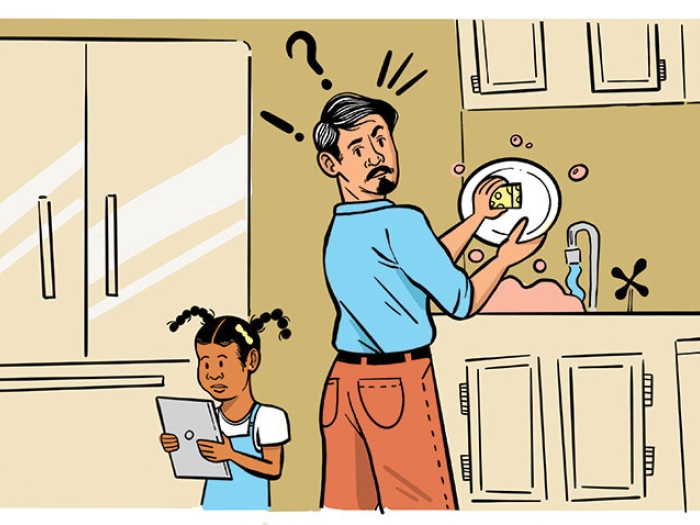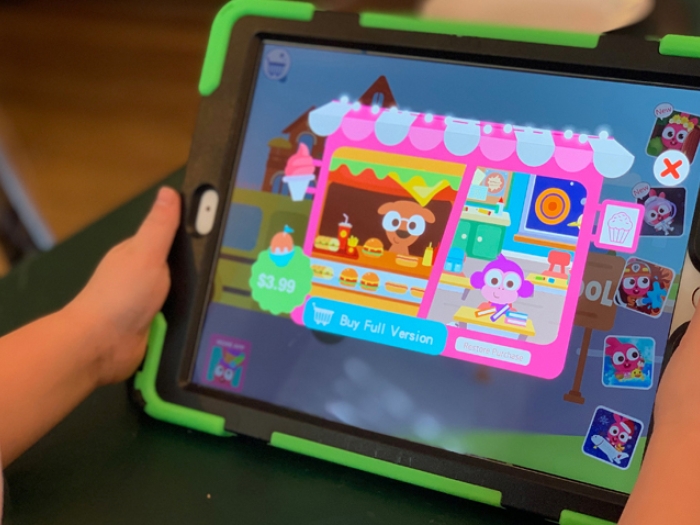Preschool-aged children, especially those from low-income homes, often exposed to sneaky ads and other tactics aiming to profit from their game playing.
11:00 AM
Author |

The majority of apps preschool-aged children use are designed to make money off their digital experiences, a new study suggests.
And children whose parents had lower education were more likely to use apps incorporating manipulative methods that increase advertising exposure, such as by keeping them playing games longer or encouraging in-app purchases.
MORE FROM THE LAB: Subscribe to our weekly newsletter
"Our findings suggest that design features created to serve the interests of technology companies over children is common and we need more regulations in place," said lead author Jenny Radesky M.D., a developmental behavioral pediatrician at University of Michigan Health C.S. Mott Children's Hospital and researcher at Michigan Medicine.
"These design tricks disproportionately occur in apps used by children from disadvantaged socioeconomic backgrounds, suggesting inequities in how young children's attention is exploited for monetization."
Researchers analyzed apps used by 160 children ages three to five and looked for what some experts have called "dark patterns," or tricks aimed to prolong gameplay, prompt children to re-engage with the app, exert purchase pressure, or make them watch ads. The findings appear in JAMA Network Open.
Four in five apps used such manipulative designs – and they were most prevalent in apps used by children from households whose parents had lower education levels than children whose parents had graduated from college. Such tactics were also most prevalent in apps categorized as "general audience."
Examples of such designs:
-
Pop-up messages, such as "Come back tomorrow and get a dragon" to entice return to game playing or "You can play with these cute tiny animals for a small fee. Just ask your parents" to encourage in-app purchases.
-
Characters saying things like "Don't just stand there, do something!" when children are idle, to keep them playing.
-
Prompts to sign up for free trials of a paid version of the app showing a character crying when the child has not followed the prompt.
-
Character yelling "save me!" with fabricated time pressure from countdown clock, shown at a pause in the game to urge prolonged game use.
-
Using lures, such as stickers or trophies, to entice users to repeatedly engage with the app (i.e. earning daily rewards that accumulate.)
-
Pop-up roadblock advertisements that stay up for 20 seconds prompting player to interact with it before the "X" appears to close out the ad
Almost all children (nearly 99%) had at least one manipulative design in one of their top-used apps.
Authors note that an app's success is often based on metrics such as how long and often users engage with them, which is likely behind design tricks that aim to achieve such goals.
But young children may not be able to identify these tricks, such as distinguishing between a screen intended to sell something versus being part of their game or recognize that time pressures are fabricated.
"Children love their favorite media characters, so they may be particularly susceptible to pressure from them, or by virtual rewards flashed across the screen every time they are at a point when they might choose to disengage from the app," Radesky said.
"Adult users might expect to be targeted by ads through apps on digital devices. But children are too young to understand this type of persuasive design that disrupts their game playing. Parents often say their children refuse to hand over devices when it's time to do something else – like come to dinner or get ready for bed – and the gameplay-prolonging design tricks we found are likely contributing to this avoidable source of family stress."
Authors say the findings should encourage government, regulatory or industry leaders to make changes that ensure children's wellbeing and design needs are considered before digital products are released to market.
"Children are avid users of the digital world, and deserve access to its opportunities without having to navigate the glut of profit-centered design that currently dominates the market," Radesky said. "Through initiatives like Designed with Kids in Mind, we have the chance to encourage lawmakers to pass legislation that holds industry accountable for considering children's best interests, which includes eliminating manipulative design."
Disclosures: Radesky was paid to serve on the Noggin scientific advisory board in the past, and the Noggin app was examined in this study, but was coded by research assistants without input from Dr. Radesky.
Additional authors include Alexis Hiniker, Ph.D., of University of Washington; and Caroline McLaren, Eliz Akgun, B.A., Alexandria Schaller, B.A., Heidi Weeks, Ph.D., Scott Campbell, Ph.D. and Ashley Gearhardt, Ph.D., all of University of Michigan.
Study cited: "Prevalence and Characteristics of Manipulative Design in Mobile Applications Used by Children," JAMA Network Open. DOI: :10.1001/jamanetworkopen.2022.1764
Like Podcasts? Add the Michigan Medicine News Break on iTunes or anywhere you listen to podcasts.

Explore a variety of healthcare news & stories by visiting the Health Lab home page for more articles.

Department of Communication at Michigan Medicine
Want top health & research news weekly? Sign up for Health Lab’s newsletters today!





